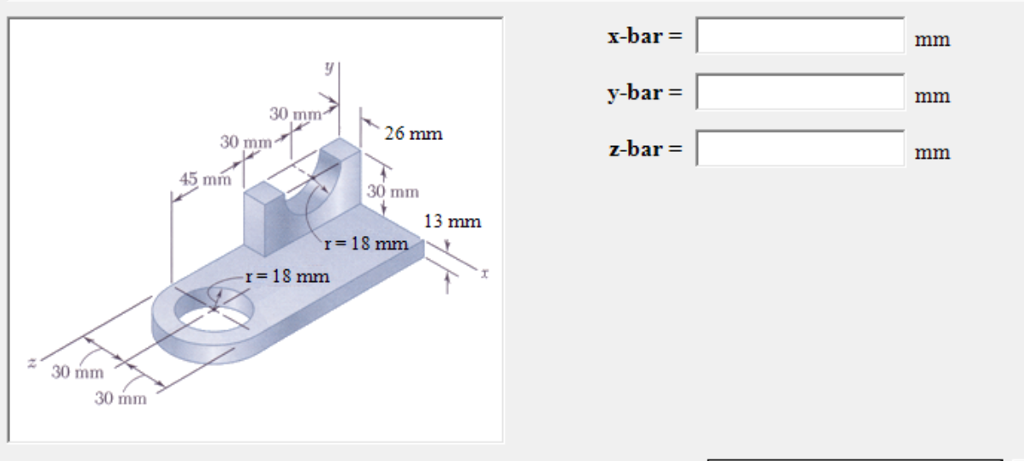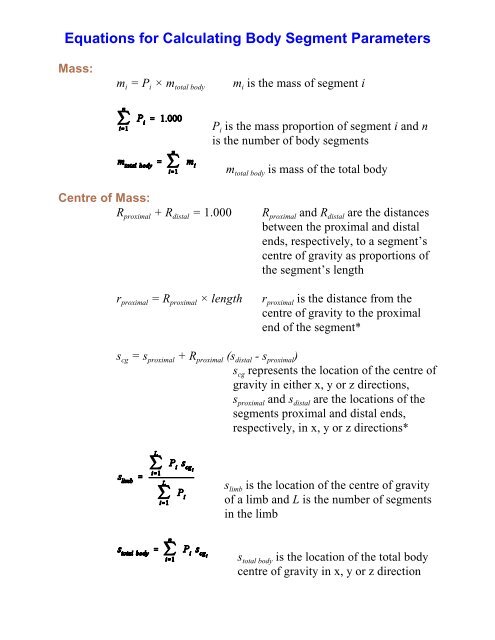Z Location Of Center Of Gravity
- Z Location Of Center Of Gravity Defyer
- Z Location Of Center Of Gravity In Space
- Z Location Of Center Of Gravity

The center of gravity is the point from which the gravitational attraction of a body appears to act. In a uniform gravitational field this is coincident with the body's center of mass.In a distributed mass, the center of gravity (CG) is an appropriately defined 'average location' of its parts. The center of gravity of a body is the point where all forces acting on the body equal zero. In this illustration it is represented as the intersection of the x, y, and z axes. It may be located by application of the principle of torques. Knowing the location of the center of gravity when rigging is crucial, possibly resulting in severe injury or death if assumed incorrectly. A center of gravity that is at or above the lift point will most likely result in a tip-over incident. In general, the further the center of gravity below the pick point, the more safe the lift.
As a rocket flies through the air, it both translates and rotates. The rotation occurs about a point called the center of gravity. The center of gravity is the average location of the weight of the rocket. The mass and weight are distributed throughout the rocket, and for some problems, it is important to know the distribution. But for rocket trajectory and maneuvering, we need to be concerned with only the total weight and the location of the center of gravity.

How would you determine the location of the center of gravity?
Calculating cg
A model rocket is a combination of many parts; the nose cone, payload, recovery system, body tube, engine, and fins. Each part has a weight associated with it which you can estimate, or calculate, using Newton's weight equation:
w = m * g
where w is the weight, m is the mass, and g is the gravitational constant which is 32.2 ft/square sec in English units and 9.8 meters/square sec in metric units on the surface of the Earth. On the Moon and Mars, the gravitational constant and the resulting weight is less than on Earth. To determine the center of gravity cg, we choose a reference location, or reference line. The cg is determined relative to this reference location. The total weight of the model rocket is simply the sum of all the individual weights of the components. Since the center of gravity is an average location of the weight, we can say that the weight of the rocket W times the location cg of the center of gravity is equal to the sum of the weight w of each component times the distance d of that component from the reference location:
W * cg = [w * d](nose) + [w * d](recovery) + [w * d](engine) + ...
The center of gravity is the mass-weighted average of the component locations.
Components' Location
On the slide, we show the weight and distance of the nose cone from the reference line. A similar distance can be determined for each component relative to the reference line. How do we determine the distance d? Using the nose cone as an example, the 'distance' of the nose dn is the distance of the cg of the nose relative to the reference line. So we have to be able to calculate or determine the cg of the nose cone and each of the other rocket components. For some simple shapes, finding the cg, or average location of the weight, is quite simple. For example, when viewed perpendicular to the axis, the body tube is rectangular. The cg is on the axis, halfway between the end planes. For other shapes, like the nose cone, determining the cg of the component is not so simple. There is a technique for determining the cg of any general shape, and the details of this technique is given on another page.
Determining cg Mechanically

For a small model rocket, there is a simple mechanical way to determine the cg for each component or for the entire rocket:
- For simple geometries we just balance the component or the entire rocket using a string or an edge. The point at which the component or rocket is balanced is the center of gravity. This is just like balancing a pencil on your finger! Obviously, we could not use this procedure for a large rocket like the Space Shuttle, but it works quite well for a model.
- Another, more complicated way, is to hang the model from some point, for example, the corner of a fin, and drop a weighted string from the same point. Draw a line on the rocket along the string. Repeat the procedure from another point on the rocket, the nose, for example. You now have two lines drawn on the rocket. The cg is the point where the lines intersect. This procedure works well for irregularly shaped objects that are hard to balance. The problem with this procedure is that the cg can fall outside the body for complex geometries.
- Rocket Weight:
One has to ask What, Where, and How when it comes to your warehousing strategy. Or another hot area to consider in build-to-order fulfillment is the explosion of 3D Printing Companies.
There are at least 3 critical items that allow you to reduce costs and increase service level in warehousing:
- Tight and Necessary Warehousing Processes
- What Warehouse Metrics do you have in place to help you determine if your processes are going well or not.
- You warehouse location is optimal in the first place to meet service level commitments.
- These together will help you reduce costs in your warehouse.
Where to build a distribution center, fulfillment center, or warehouse is a strategic question. The answer to “where” are drivers to costs and the customer experience. Where to build your next warehouse is an incredibly important question to answer. After you answer the “where” question, then we need to discuss what warehouse processes and warehouse metrics ought you establish.
There are, of course, many factors to consider:
- What is your expected inventory profile?
- What is your geographic distribution strategy?
- State and Municipalities incentives? State and Local Government Incentives?
- Proximity to the Logistics Carrier (such as UPS World Hub or Ground Transport)
- The pool of local talent available in the area.
- Inbound and Outbound transportation costs.
- Access to interstate highway systems or inbound sea import locations.
- Crime rate, Housing, Educational Facilities
- State Taxes, Nexus
- Building construction codes and zoning restrictions
The above are important criteria and should be considered. But, to answer the question of “where”, also requires a more quantitative approach that should be used in concert with the above considerations. One common approach to identifying where to build the next single fulfillment center location is a method called the Center of Gravity Method.
Center of Gravity Method
The Center of Gravity Method is an approach that seeks to compute geographic coordinates for a potential single new facility that will minimize costs. It’s an approach where the main inputs that it considers are the following:
- Markets
- Volume of goods shipped
- Shipping costs
This method is beneficial because it’s (1) Simple to compute, (2) Considers existing facilities, (3) and Minimizes costs.
How To Use Center of Gravity Method
Step 1:
- Place existing warehouse, fulfillment center, and distribution center locations in a coordinate grid.
- Place the grid on an ordinary map.
- The relative distances must be noted.
Step 2:
Then, using the equations below,
- Cx= ∑ dix Vi/ ∑ Vi
- Cy= ∑ diy Vi/ ∑ Vi
We calculate the X and Y coordinates using these equations where Cx is the X (horizontal axis) coordinate for the new facility. Cy is the Y (vertical axis) coordinate for the new facility, dix is the X coordinate of the existing location, diy is the Y coordinate of the existing location, and Vi is the volume of goods moved to or from the ith location.

Step 3:
Once you have obtained the X and Y coordinates place that location on the map.
But, it doesn’t end there. As I mention earlier, there are other factors to consider. What this method allows is a point of departure – or, literally, a starting point of where (from the perspective of longitude and latitude) you options are for where to grow your fulfillment or logistics network.

Center of Gravity Example
Let’s suppose your company wants to expand its logistics network and locate a facility within a network of three existing facilities. Given the following assumptions below, what are the coordinates for the new potential location?
Let’s assume the following:
Z Location Of Center Of Gravity Defyer
- Warehouse 1 has a daily outbound goods volume of 2,500 units
- Warehouse 2 has a daily outbound goods volume of 1,300 units
- Warehouse 3 has a daily outbound goods volume of 5,000 units
And the current coordinates of the existing facilities:
Given the assumptions and grid coordinates above, we get the following:
- d1x= 200
- d2x= 300
- d3x= 100
- d1y= 50
- d2y= 100
- d3y= 150
And,
- V1= 2,500
- V2= 1,300
- V3= 5,000
Which gives us,
Z Location Of Center Of Gravity In Space
- Cx= (200 x 2,500) + (300 x 1,300) + (100 x 5,000) / (2,500 + 1,300 + 5,000) = 158
- Cy= (50 x 2,500) + (100 x 1,300) + (150 x 5,000) / (2,500 + 1,300 + 5,000) = 114
If we were to plot the new suggested warehouse coordinates on the grid, we would get:
Of course the discussion doesn’t end here. Once a coordinate or several are identified given the current logistics network context, then other factors must be considered. This is just the beginning – a point of departure.